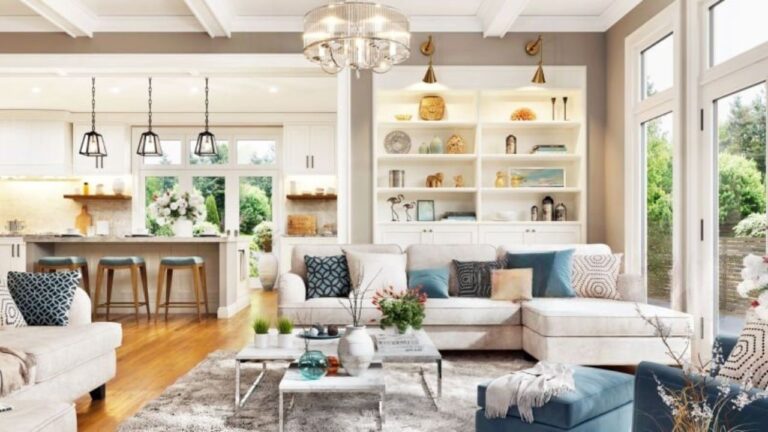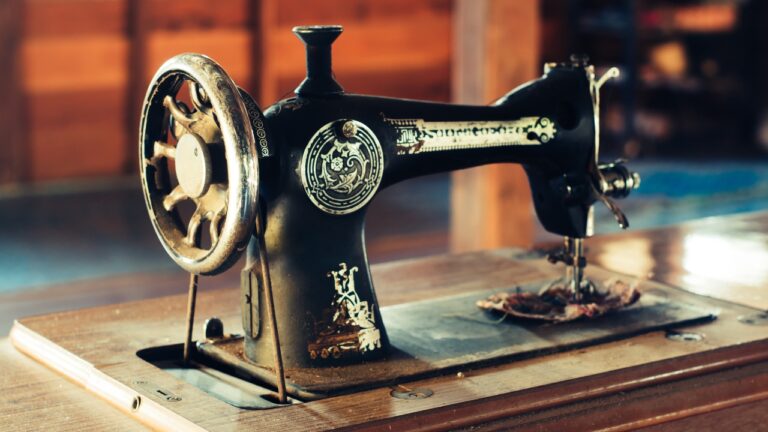When a beautiful room doesn’t fit your routine (and how to fix it)
You’ve checked off the main pieces. The sofa fits, the rug is sized right, and the wall color ties it all together. On paper, it’s finished.
Then morning hits, the school rush starts, or dinner runs late—and the room falls apart in minutes. That’s the gap between how a space is styled and how it handles real life. Décor may be done, but the routine keeps exposing weak points.
You don’t need a full reset. You need to align the room with what happens there hour by hour. When the layout, storage, and maintenance plan reflect your daily rhythm, the room finally holds its shape.
Map the day before you move a thing
List what actually happens in this room from wake-up to lights out. Do kids read here after dinner? Do you fold laundry on the ottoman? Does the dog nap under the window? Your space should reflect those patterns. If you always drop mail on the console, plan for it with a real system. If homework happens at the coffee table, lighting and surface height should support that.
Action: Write five routine tasks that happen here, then ask: where does each item used in that task live? If an item is stored more than two steps away, it’s going to migrate and linger.
Build storage that lives at the point of use
Pretty baskets across the room don’t help if blocks always land by the sofa. Keep containers where items are actually used. Use a lidded bin for remotes and chargers in the coffee table drawer. Add a low basket for throws by the chair that gets chilly at night. If you like board games on weekends, a shallow cabinet near seating beats a closet down the hall.
Rule: The container is the limit. When it’s full, something edits out. That single rule holds the line better than any marathon declutter.
Give surfaces a job and a reset
Styled surfaces look great for photos, then real life crowds them. Assign every surface a job. Coffee table: a tray for remotes and open space for cups. Console: lamp, key tray, and one framed photo. Side table: lamp and coaster. Everything else earns its spot or goes. End the day with a two-minute reset that returns each surface to its job.
Tip: If your coffee table has a shelf, use a low bin for kid books and a second for puzzles. The shelf stops clutter from landing on top.
Lighting that matches activity, not mood boards
Evenings reveal design gaps. If people are squinting to read or the whole room glows unevenly, your routine will fight the space. Add a lamp at each seating zone, raise shade height so light clears the top of the chair back, and match bulb temperature across the room. Use a floor lamp with a swing arm behind the seat that gets used most.
Quick win: Put lamps on smart plugs labeled “Evening.” One tap sets the mood and prevents the overhead-only habit that makes rooms feel harsh.
Route movement like a hallway
If the path from kitchen to patio cuts between the sofa and TV, your layout will never settle. Slide the seating group so the main walkway skirts the furniture instead of slicing through it. Keep 30–36 inches for circulation. A rug large enough to hold front legs of all seats pulls the group together so traffic flows around it.
Reality check: Walk the route you use most with a tray in your hands. If you bump corners, adjust until the path is clear.
Parking for the things that drift
Water bottles, headphones, books, and blankets circulate daily. Create two “parking” spots per room: a small tray on an end table and a basket under the console. Family members learn to drop things there during the day; at night, items go to their real homes. This prevents the all-or-nothing cleanup that gets skipped when you’re tired.
Note: Label baskets for kids or categories. Clear expectations are easier to follow than a nightly lecture.
Maintenance is a design feature
Cushions that pancake, rugs that buckle, and throws that shed make a room look worn, no matter how pretty the palette. Choose inserts one size up for crisp cushions, add a rug pad that fits the rug exactly, and buy throws that survive weekly washing. Keep a small kit in the living room cabinet: lint roller, fabric shaver, felt pads, and a mini screwdriver for loose knobs.
Routine: Sunday five-minute polish—lint-roll, fluff, rotate cushions, and check felt pads. The room stays photo-ready without effort.
Balance personality with function
Personal items make a room feel like home, but they need a place to land. A small ledge for kid art, a photo strip frame, or a single display shelf holds memories without letting them colonize every surface. Rotate monthly. Personality works best when it’s edited and easy to move for cleaning.
Guardrail: One personal display zone per room keeps sentiment from turning into clutter.
The room finally matches the life it holds
When storage sits where you use it, surfaces have jobs, and lighting supports real tasks, your styled room stops collapsing under daily pressure. Décor didn’t fail—logistics did. Now they’re on the same team, and the space looks pulled together at 7 a.m. and 9 p.m.
Like Fix It Homestead’s content? Be sure to follow us.
- I made Joanna Gaines’s Friendsgiving casserole and here is what I would keep
- Pump Shotguns That Jam the Moment You Actually Need Them
- The First 5 Things Guests Notice About Your Living Room at Christmas
- What Caliber Works Best for Groundhogs, Armadillos, and Other Digging Pests?
- Rifles worth keeping by the back door on any rural property
*This article was developed with AI-powered tools and has been carefully reviewed by our editors.







